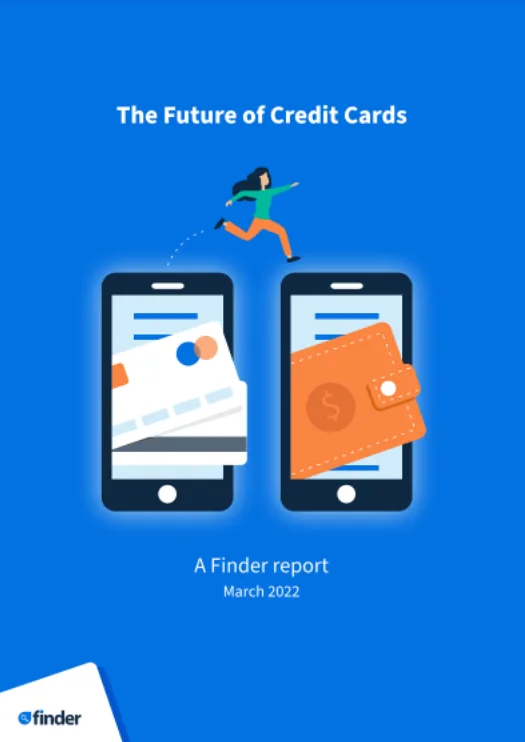There are 13,471,923 credit cards in Australia as of November 2023, netting a national debt accruing interest of $18.1 billion. For many Australians, managing credit and debt through credit cards is a common element of their day-to-day money habits, while for others a few bad mistakes have resulted in a downward debt spiral. But what does the state of Australia's credit card use actually look like?
How many people have a credit card, and how much do they spend?
The count of credit cards in Australia has seen a consistent decline since 2018, with this trend persisting throughout 2019. 2020, and 2021 until hitting a low point of 13,149,442 in April 2022. However, a notable turnaround began from that point onward, marked by a gradual recovery. By November 2023, the number of credit cards had rebounded to 13,471,923, underscoring a renewed sense of stability within the Australian credit card market.
Could Australians manage their finances without a credit card?
According to the Finder CST survey on June 2023, it was revealed that 30% of Australians rely on credit cards to effectively manage their finances. Interestingly, this dependence slightly skewed towards women, with 31% of females leaning on credit cards, compared to 29% of their male counterparts.
How many people who applied for a credit card have been rejected?
While 13.5 million Australians currently have a credit card, some have run into difficulties accessing this form of credit. Of those who have been denied, unsteady income (34%) is the top culprit, followed by having a bad credit score (27%) and having too much debt (23%).
What are the main reasons for an Australian to apply for a credit card?
Emergencies, rewards and big-ticket items among top reasons for taking out a credit card.
Where do Australians turn if they can't pay off their credit card debt?
Worryingly, only half of Aussies who find themselves buried under out-of-control credit card debt would be able to dig themselves out.
In the December 2023 Finder CST survey, it was revealed that 13% of Aussies had fallen behind on repayments by 30 days or more. Notably, 2% of cardholders faced a more concerning delay of over 60 days.
How have credit card interest rates compared to the RBA Cash Rate?
According to the Reserve Bank of Australia, the average standard credit card rate is 19.82%. Between 1995 and 2010, the average credit card rate moved up and down with the cash rate. Since 2010, however, the average credit card interest rate remained steady while the cash rate fell dramatically. Even following a seried of 12 dramatic cash rate increases over the last two year, the credit card interest rate has remaines unchanged.
So how can Australians stay on top of their credit card debt?
What do the experts say?

Amy Bradney-George, credit card expert at Finder
"You can use a credit card repayment calculator to work out a payment plan that's affordable for you. Some credit card providers (including CommBank, Westpac and American Express) also offer instalment plans that let you pay off some or all of your balance in equal instalments over a fixed period of time, which can make it easier to budget for them."

Taylor Blackburn, personal finance specialist at Finder
"The best way to stay on top of your credit card debt is to only spend within your means. Credit cards aren't just free money, so be careful with your spending habits and avoid purchasing things you don't really need. If you do find yourself in debt, you can buy yourself some extra time by taking out a 0% balance transfer credit card and consolidating your debt. The less you pay on interest, the more you can put towards actually paying off your debt."

Graham Cooke, head of consumer research at Finder
"There are two very different types of credit cards on the market in Australia - cards with low interest rates, and credit cards with rewards. Both are fantastic but both are aimed at very different customers. Start with a basic card, with a low rate. Only if you can successfully spend on this card and pay it off in full every month should you consider upgrading to a rewards card. If you do, however, the rewards can be great."
How has the way Australians use credit cards changed over the years?
The table below depicts the average number of accounts per year, the total number of purchases and total purchases spend nationally, the average balance per card, and the proportion of that balance accruing interest.
The Future of Credit Cards
 Finder's newest report, The Future of Credit Cards, delves into the state of Australia's credit card market. We examine the impact of COVID-19 on the credit card environment, how consumer demands are evolving and the trends shaping the future of lending. We look at generational differences in the demand for credit, and in particular the rise of buy now pay later among younger consumers. Finally, Finder's experts share their thoughts on how credit cards are changing and the future of the industry.
Finder's newest report, The Future of Credit Cards, delves into the state of Australia's credit card market. We examine the impact of COVID-19 on the credit card environment, how consumer demands are evolving and the trends shaping the future of lending. We look at generational differences in the demand for credit, and in particular the rise of buy now pay later among younger consumers. Finally, Finder's experts share their thoughts on how credit cards are changing and the future of the industry.
Download the full report here.
How does America compare?
Due to differences in population, it's no surprise that there are 551 million more credit card accounts in America than circulating credit cards in Australia. The average American credit card debt is also 26.6% larger, with $3,911 spent on the average card each month. To see more statistics on American credit cards, head to this page.
Are you a journalist or researcher? If you need any further data or custom research, please contact Graham Cooke.





On the chart titled ‘Australian credit and debit card statistics,’ could you please provide an explanation for the significant decrease in debit card usage observed in 2018? Specifically, in April 2018, there were 46,971,025 debit cards in circulation, but by May, this number had dropped to 30,865,552. What factors contributed to such a substantial change in debit card usage during that time?
Hi Leah,
This difference is due to the Reserve Bank of Australia implementing a reporting change in May 2018, rather than a change in consumer behaviour. Debit card spending was still very similar between April 2018 and May 2018, and the chart outlining average debit card and credit card spending reveals that spending has increased since then. I hope this helps.
I would like to know the size of the sample for this survey pls.
Hi Shalin,
All of the credit card numbers represented on this page are drawn from government data, specifically from the RBA, so there is no sample size – it’s based on all credit card cardholders.
Supporting data (such as “Why do Australians take out a credit card?” is based on our Consumer Sentiment Survey, which currently covers a sample of over 47,000 people. See more here: https://www.finder.com.au/cst
Hope this helps!
Hi,
I was wondering if you could please tell me 3 pros and 3 cons of owning a credit card.
Hi Elli,
Thank you for getting in touch with Finder.
These are some of the pros of credit cards:
1. Flexibility. Credit cards allow the customer to avoid having to carry large amounts of cash around. They are perfect for those occasions when an unexpected purchase becomes necessary, and sufficient cash is not available. They also allow for quick and simple phone and internet transactions.
2. Safety. When cash is lost or stolen, there may be no way of recovering it. If your credit card is lost or stolen, the card will be replaced, and your maximum liability for fraudulent use is limited by law to $50. However, Visa, Mastercard, and American Express all operate zero-liability policies so that the customer is not liable for even a single cent.
3. Spending power. Credit limits on credit cards often mean that customers can purchase large goods straight away that they would normally have to save up for over many months.
These are some of the cons of credit cards:
1. Overspending. When talking about the pros and cons of credit cards, this is the classic downside. Some individuals can get easily carried away with their credit cards, creating a debt that is beyond their means to pay off. Credit cards should not be seen as having access to “free money”. In fact, once the interest starts kicking in, you will end up paying more than the purchase price of your goods.
2. Multitasking. A credit card should be used for just one task. If it has a good rate for purchases, then it should be reserved for that. If a balance transfer is made to a credit card, then it should be used for nothing else. Problems arise when customers think it’s okay to carry out both these transactions on their credit cards simultaneously. This creates a conflict of interest – literally. The lower interest debt is always paid off first, which means the higher interest purchases will keep accruing interest untouched by your repayments.
3. False sense of security. Covering everyday purchases on a credit card can lead customers to believe they have more cash available than they really do. Having cash in your pocket must be logically balanced by the level of your credit card debt. If your credit card debt is building, your ready cash should be set aside to cover it at the end of the month.
These are the main pros and cons to be aware of with credit card ownership. Remember that owning a credit card means you are involved in a legally-binding contract, so you need to make sure you are playing a straight game.
You may also want to read the benefits and disadvantages of having a credit card.
I hope this helps.
Please feel free to reach out to us if you have any other enquiries.
Thank you and have a wonderful day!
Cheers,
Jeni
Hi – I’d like to know what amount the average Australian is paying off on their credit card each month. The monetary amount not the percentage. Is this something you have? Thank you
Hi Catherine,
Thank you for getting in touch with Finder.
The level of credit card debt can go up or down depending on what the trend is on a monthly basis. As per this page, the average credit card purchase as of February this year is $118.97.
The information we have on this page is from the RBA. You may also want to read more about credit card debt.
I hope this helps.
Have a great day!
Cheers,
Jeni
Can you advise what % of total Australian credit cards and the related purchase value is transacted with a MasterCard please and what % is spent on holidays and travel?
Hi Graham,
Thanks for your question.
Unfortunately, we don’t have the information you are looking for. What we do have is the overall number of purchases using all types of Australian credit cards and debit cards as shown above this page.
Kind regards,
Rench